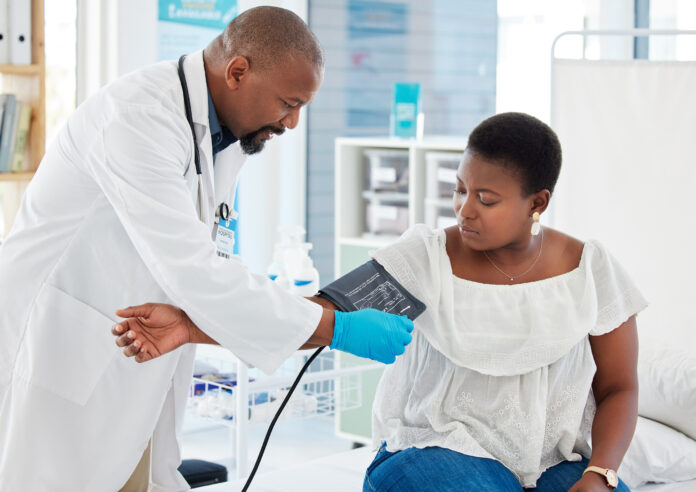We all say we want to be healthy, but what do we mean when we say that? The World Health Organization defines it as a complete state of physical, mental, and social well-being and not merely the absence of disease or infirmity. But understanding where and how we can improve those factors is essential if we want to move in that direction for ourselves and our families. One of the critical factors is knowing our health numbers, how our weight factors in, and the combined impact it may have on us now and in the future. So, when we consider weight loss, it is ultimately in pursuit of a healthier life.
The Impact of Food Deserts
As a community, chronic diseases hit us the hardest. Research shows that several chronic conditions, including obesity, diabetes, and high blood pressure, disproportionately impact African Americans. We already know structural racism and racial bias are reasons why these health disparities exist. In addition, socio-economic factors that affect many Black Americans, such as lack of quality insurance and safe spaces to exercise, cannot be overlooked.
But we must remember how living in food deserts impacts our health. According to a report by McKinsey, one out of 5 Black households is in a food desert, with fewer grocery stores, farmer’s markets, and restaurants offering healthy options. For some of us, convenience stores and fast-food restaurants are the closest options. Yet, we are still expected to spend nearly $340 billion on food by 2030.
Black consumers want offerings that are culturally relevant and convenient, facilitate healthy habits, demonstrate good value for the price, and allow them to experience new foods.
Despite these challenges, it is possible to live a healthy lifestyle and break free from these race-related stigmas. An excellent place to start is knowing about the healthy numbers we need to work towards, whether we are striving to prevent a chronic disease or manage one.
High Blood Sugar (Hyperglycemia)
High blood sugar occurs when too much glucose, or sugar, is in the blood. If left untreated, high blood sugar can lead to type 2 diabetes over time. It can also lead to severe complications, including eye, kidney, and nerve damage. African Americans are at higher risk for developing high blood sugar.
Symptoms may not always be present when blood sugar is high. Some signs of high blood sugar include frequent urination and increased thirst. You may experience tiredness, confusion, nausea, vomiting, and stomach pain in severe cases. If you have concerns about your blood sugar, your provider can check your levels by conducting a simple blood test.
There is a common misconception that eating too much sugar causes diabetes.
While consuming sugary foods and drinks is unhealthy and can play a role, there are other contributing factors. The biggest problem with a poor diet is that it contributes to weight gain. Excess weight contributes to high blood sugar. Losing weight helps the body maintain healthy blood sugar levels and lowers the risk of complications.
However, our blood sugar goals may vary based on specific factors. The American Diabetes Association recommends that patients with diabetes aim for an A1c goal of < 7%. Blood sugars should stay between 80 and 130 mg/dL before meals and less than 180 mg/dL 1 to 2 hours after eating.
If you do not have diabetes, you should aim for an A1c of < 5.7%, and fasting blood sugars should be around 100 mg/dL.
High Blood Pressure (Hypertension)
High blood pressure occurs when the force of blood in your blood vessels is too high. This often results in your heart working much harder to do its job. If left untreated, high blood pressure can cause damage to your arteries. It can also lead to other conditions such as heart disease, stroke, heart failure, kidney disease, and sexual dysfunction.
High blood pressure is commonly referred to as a ‘silent killer’ because you may feel perfectly fine and not have any symptoms. When symptoms are present, they may include headache, chest pain, shortness of breath, and vision changes.
The best way to prevent long-term damage is to know your numbers. If you don’t have a blood pressure monitor, consider investing in one. Or ask a friend or family member to use theirs. Most pharmacies offer free blood pressure checks, and you can usually stop by your provider’s office to have your blood pressure checked without an appointment, but be sure to call ahead to confirm.
A blood pressure of 120/80 or lower is considered normal. If you have been diagnosed with hypertension, aim for a blood pressure goal of less than 130/80.
How Weight Factors In
There is a connection between being overweight and being diagnosed with hyperglycemia and hypertension. However, embarking on lifestyle changes that result in 5-10% weight loss may set us on the path to being healthier.
Dr. Holly Lofton, Clinical Associate Professor of Surgery and Medicine at the NYU Grossman School of Medicine, states that losing weight can also improve conditions such as prediabetes, high cholesterol, acid reflux, specific liver disease, and osteoarthritis.
“Even a 5% weight loss can be significant,” states Dr. Lofton, “However, there are specific weight loss goals depending on the condition.”
- 5-10% weight loss is recommended to prevent prediabetes from becoming diabetes
- 5-15% weight loss is recommended to reduce the severity of diabetes, high cholesterol, and high blood pressure
- At least a 10% weight loss is associated with reduced acid reflux symptoms
- 5-10% weight loss is recommended to improve physical function with osteoarthritis
- 7-10% weight loss is recommended to improve the fatty tissue present in liver cells of patients with liver disease, which is a risk factor for heart disease and many types of cancer
“I encourage anyone who feels that losing weight is intimidating to talk to your doctor,” says Dr. Lofton. She emphasizes that having percentage goals such as the ones listed above and aiming for smaller weight loss goals is attainable by making small changes that can lead to improved health.
Supported by an educational grant from Novo Nordisk Inc.






